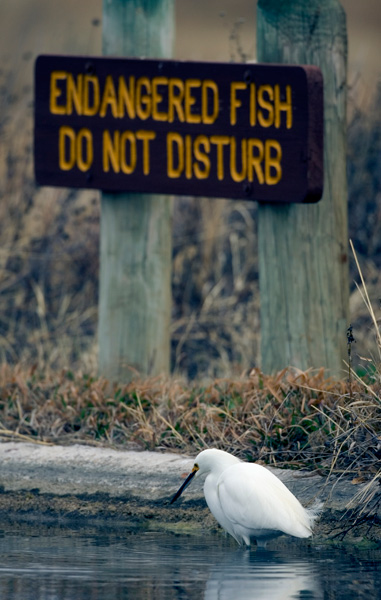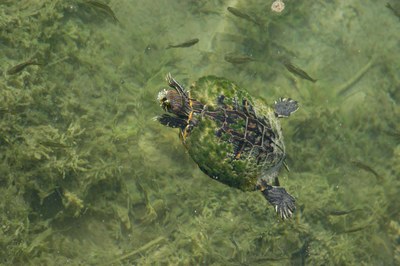Protecting San Solomon Springs
 Water gushing from San Solomon Springs fills the pool at Balmorhea State Park, then flows downstream through cienegas and canals in the park and beyond. Not only does the water refresh hot, dusty Texans, it is also home for several rare and endangered species.
Water gushing from San Solomon Springs fills the pool at Balmorhea State Park, then flows downstream through cienegas and canals in the park and beyond. Not only does the water refresh hot, dusty Texans, it is also home for several rare and endangered species.
Texas Parks and Wildlife Department’s mission is to protect the springs and this historic state park.
Oil and Gas Production
Oil and gas wells have dotted far West Texas over the last 50 years. But recent innovations such as hydraulic fracturing or “fracking” have changed how companies extract fuel from the ground.
As a result of these innovations, the Apache Corporation announced in fall 2016 it had identified a new area for pumping – the Alpine High Play. This play includes southern Reeves County, home to Balmorhea State Park.
Apache estimates it will have 2,000 to 3,000 well locations in this play, but possibly up to 5,000. Apache Corporation is not the only company operating in this area. Drilling may last for more than 20 years.
Concerns
How might oil and gas production impact the springs?
One concern is that water use might diminish spring flows. Fracking to extract oil and gas requires 2 to 5 million gallons of water per well. Apache intends to reuse water as much as possible during the fracking process. It’s undetermined how much water from the local area oil and gas producers will use.
Another concern is water quality. Oil and gas producers commonly dispose of used fracking water (mostly highly salty water) in deep injection wells. Fluids might leak and migrate into groundwater. The well locations are not yet known. Oil companies also store and transport fluids, posing a risk of spills that could affect both groundwater and surface water.
Diminished spring flows or lower water quality would very likely harm the species that depend on the San Solomon Springs for survival. Either of these could also make the pool unsuitable for swimming.
The Plan
TPWD formed a working group of scientists in 2016 to address concerns. The San Solomon Springs Biomonitoring Plan, published in January 2018, summarizes the group’s recommendations.
The plan outlines steps to research and monitor water quality, water quantity, and the species that depend on the spring water. The plan also calls for working with oil and gas operators to minimize impacts to the springs.
Monitoring Efforts
 Monitoring of water quality, quantity and species began in 2017. The scientists want to gather information before heavy drilling begins, so they can identify impacts of drilling more readily. Apache already has test wells in operation.
Monitoring of water quality, quantity and species began in 2017. The scientists want to gather information before heavy drilling begins, so they can identify impacts of drilling more readily. Apache already has test wells in operation.
The United States Geological Survey installed a continuous streamflow gauging station in May 2017. See real-time flow data by clicking on the San Solomon Springs dot on the map.
The Texas Commission on Environmental Quality has also installed a near real-time water quality station in the park. To see the status, select the monitoring site (Balmorhea Pool Discharge Canal C808) in the dropdown box, then click “Generate Report” at the top of the page.
Finally, TPWD staff, along with Texas State University students, have begun gathering information quarterly on the quantity and types of species living in the spring waters.
Looking Ahead
Monitoring and research will continue in the months and years to come.
Texas Parks and Wildlife Department is committed to protecting these Texas treasures.
